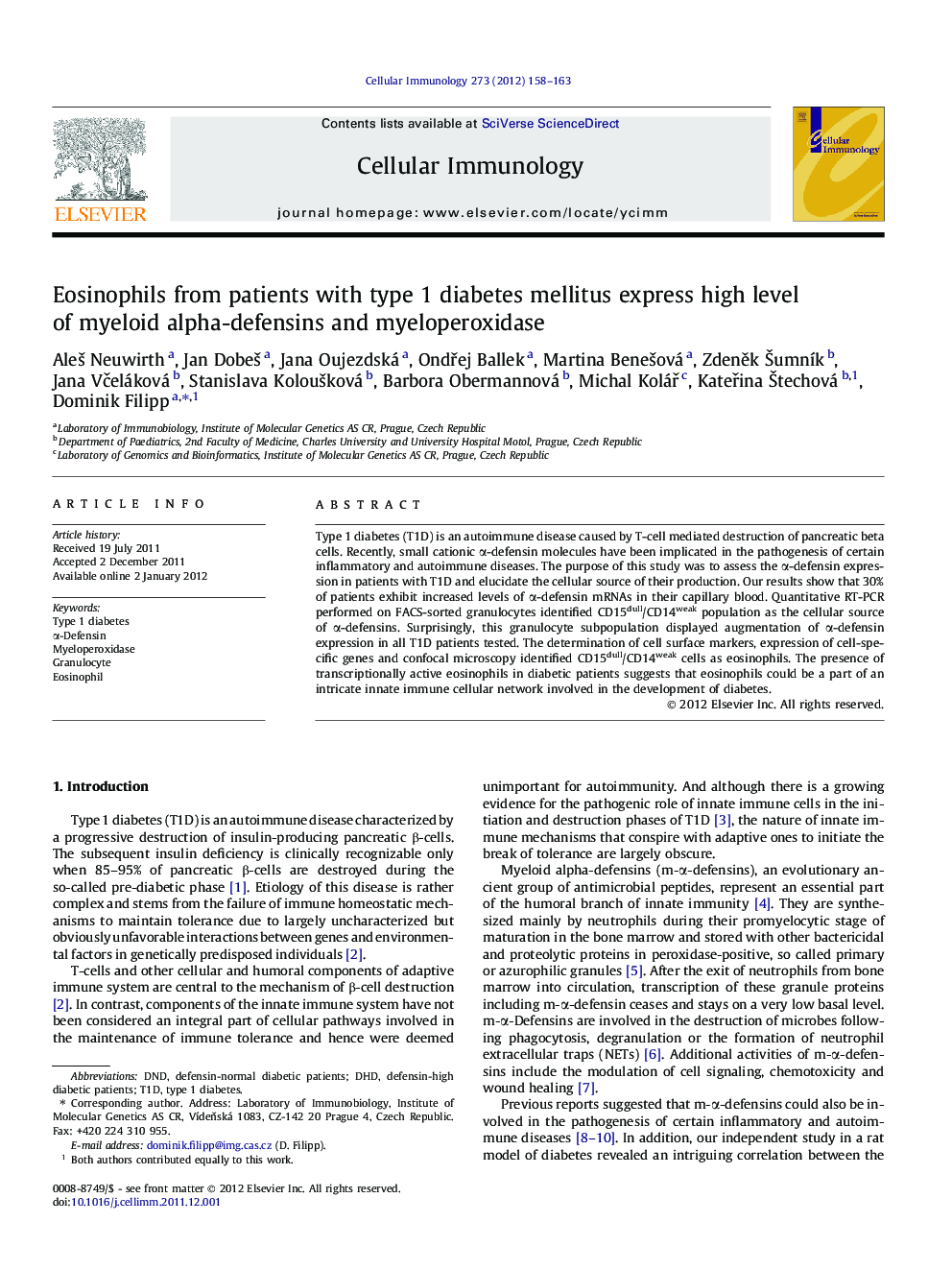| کد مقاله | کد نشریه | سال انتشار | مقاله انگلیسی | نسخه تمام متن |
|---|---|---|---|---|
| 2167355 | 1092325 | 2012 | 6 صفحه PDF | دانلود رایگان |

Type 1 diabetes (T1D) is an autoimmune disease caused by T-cell mediated destruction of pancreatic beta cells. Recently, small cationic α-defensin molecules have been implicated in the pathogenesis of certain inflammatory and autoimmune diseases. The purpose of this study was to assess the α-defensin expression in patients with T1D and elucidate the cellular source of their production. Our results show that 30% of patients exhibit increased levels of α-defensin mRNAs in their capillary blood. Quantitative RT-PCR performed on FACS-sorted granulocytes identified CD15dull/CD14weak population as the cellular source of α-defensins. Surprisingly, this granulocyte subpopulation displayed augmentation of α-defensin expression in all T1D patients tested. The determination of cell surface markers, expression of cell-specific genes and confocal microscopy identified CD15dull/CD14weak cells as eosinophils. The presence of transcriptionally active eosinophils in diabetic patients suggests that eosinophils could be a part of an intricate innate immune cellular network involved in the development of diabetes.
► Thirty percent of patients with T1D exhibit increased levels of m-α-defensin mRNAs in their capillary blood.
► Increased m-α-defensin levels were observed in capillary but not in venous blood samples.
► CD15dull/CD14weak eosinophil population was identified as the cellular source of m-α-defensins.
► Eosinophils from all T1D patients tested displayed augmented m-α-defensin expression.
► Eosinophils could contribute to the magnitude of inflammation and β-cell destruction.
Journal: Cellular Immunology - Volume 273, Issue 2, 2012, Pages 158–163